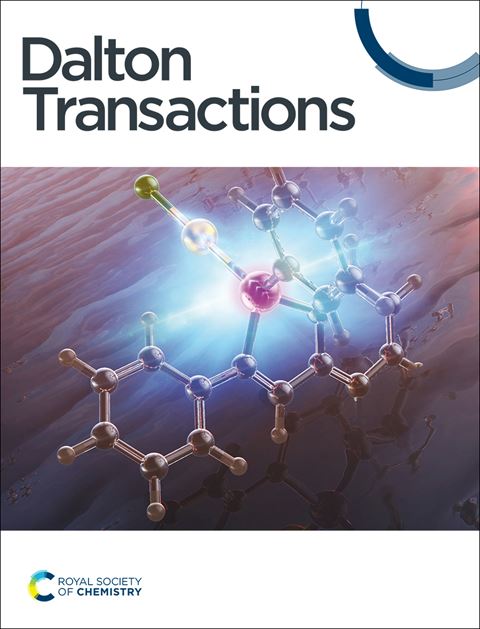一种红光可激活的异质双金属[Fe(III)-Ru(II)]复合物,作为抗癌治疗的双模式光导治疗工具
IF 3.5
3区 化学
Q2 CHEMISTRY, INORGANIC & NUCLEAR
引用次数: 0
摘要
本文章由计算机程序翻译,如有差异,请以英文原文为准。
A red light-activable hetero-bimetallic [Fe(III)-Ru(II)] complex as a dual-modality PDT tool for anticancer therapy
We developed a novel red light activable hetero-bimetallic [Fe(III)-Ru(II)] complex by combining hydroxyl radical-generating Fe(III)-catecholate as type I PDT and singlet oxygen generating Ru(II)-paracymene complex as type II PDT agents and potentially function as a dual modality PDT tool for enhanced phototherapeutic applications. The bridging linker 2-amino-3-(3,4-dihydroxyphenyl)-N-(1,10-phenanthrolin-5-yl)propenamide (L2) acted as bridging linker. The single pot synthesis of hetero-bimetallic [Fe(III)-Ru(II)] complex was carried out through acid-amine coupling. Various photophysical assays confirmed the photo-activated production of (●OH) radicals and (1O2) oxygen generation upon activation of the [Fe(III)-Ru(II)] complex by red light (600-720 nm, 30 J cm-2), and resulted in enhanced cytotoxicity with photo-index ~45. The complex, [Fe(III)-Ru(II)] potentially bonded to the DNA binding by ruthenium moiety was responsible for minimal dark toxicity. The cytotoxic potential of the complex under red light was a result of the photo-induced accumulation of reactive oxygen species through both type I and type II photodynamic therapy (PDT) mechanisms in A549 and HeLa cells, while non-cancerous HPL1D cells remained unaffected. We probed the caspase 3/7-dependent apoptosis of the complex, [Fe(III)-Ru(II)], in vitro. Overall, the hetero-bimetallic [Fe(III)-Ru(II)] complex offered an ideal example of a red light activable dual-modality next-generation PDT tool for phototherapeutic anticancer therapy.
求助全文
通过发布文献求助,成功后即可免费获取论文全文。
去求助
来源期刊

Dalton Transactions
化学-无机化学与核化学
CiteScore
6.60
自引率
7.50%
发文量
1832
审稿时长
1.5 months
期刊介绍:
Dalton Transactions is a journal for all areas of inorganic chemistry, which encompasses the organometallic, bioinorganic and materials chemistry of the elements, with applications including synthesis, catalysis, energy conversion/storage, electrical devices and medicine. Dalton Transactions welcomes high-quality, original submissions in all of these areas and more, where the advancement of knowledge in inorganic chemistry is significant.
 求助内容:
求助内容: 应助结果提醒方式:
应助结果提醒方式:


